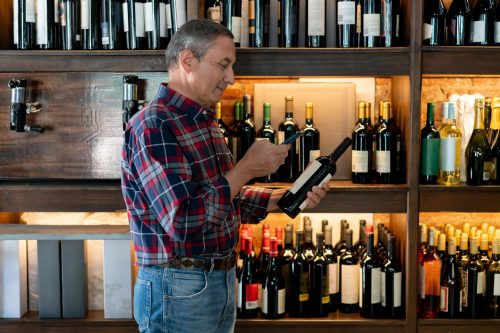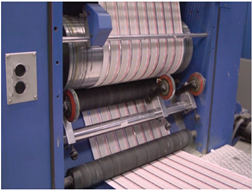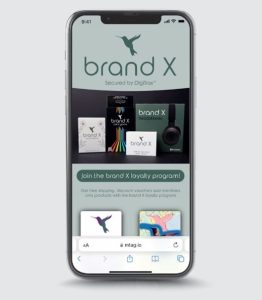By Ryne Ambrose, Brand Protection Sales Manager, Authentix
In recent years, the food industry has faced a growing challenge: food fraud. This issue has been exacerbated by the rise of e-commerce, where consumers increasingly shop for groceries online. While this shift offers convenience, it also opens the door for bad actors to sell counterfeit products, misleading consumers and posing significant risks to both health and brand reputation.
Understanding Food Fraud
Food fraud encompasses various deceptive practices including substitution, tampering, and counterfeiting. Substitution involves mixing lower-quality materials with products to increase profit margins. Tampering involves the addition of non-approved ingredients that may be dangerous or toxic. Counterfeiting is passing off an illegitimate product to mimic the genuine for ill-gotten profits or gain. These practices not only attempt to deceive consumers but also can pose serious health risks as well. For instance, a study by the University of California found that 69% of store-bought extra virgin olive oils in the U.S. were likely fake, failing to meet international standards.

The Impact on Consumers and Brands
The consequences of food fraud are far-reaching. For consumers, the risks include exposure to unidentified allergens or hazardous ingredients. As awareness of these risks grows, many consumers are becoming more vigilant about food safety. For well-known brands, the stakes are equally as high. Food fraud can severely damage the brand’s reputation and erode consumer trust. This underscores the importance of companies taking proactive measures to protect their investment in a premium brand as well as their consumers health and trust.
Preventing Food Fraud
There is no single solution to prevent food fraud; instead, an effective prevention program should include a combination of approaches. One key strategy is conducting supplier risk and vulnerability assessments. By identifying partners and assessing the level of vulnerability associated with the fulfillment of these orders, brands can often determine where to focus monitoring efforts and implement security measures. Building strong supplier relationships is crucial, as effective supplier management is essential for maintaining oversight on supply chain risk.
Another important tool is the Hazard Analysis & Critical Control Point (HACCP) concept, which has been extensively used to control food safety risks in the food industry for decades. Investing in technology to proactively remove fraudulent online listings is also vital. The right technology can detect fakes across various online channels and enforce intellectual property efficiently.
Brand Protection for the Food Industry
Brand protection for the food industry should involve a multifaceted approach that safeguards a brand’s unique identity, quality, and intellectual property. This involves a blend of strategies and legal tools designed to protect everything that makes a food brand special, from its name, logo, and packaging to its secret recipes and distinctive flavors. Effective brand protection ensures that every product bearing the brand’s mark meets consumer expectations, preserving the brand’s reputation and authenticity.
Methods for Brand Protection
Several methods can be employed to protect food brands from threats. Trademark registration provides legal defense against infringement and counterfeiting. Securing patents for unique food processing methods or recipes and maintaining trade secrets with confidentiality agreements can protect innovative products and production techniques. Implementing rigorous quality control measures and obtaining certifications like ISO or HACCP can assure consumers of product quality and safety.
Supply chain management is another critical aspect, as establishing a transparent and secure supply chain with trusted suppliers and distributors helps prevent the introduction of counterfeit products. Utilizing covert and/or overt anti-counterfeiting technologies and tamper-evident packaging can also help consumers and company inspectors alike to help identify authentic products. Monitoring the internet and social media for unauthorized use of the brand and employing digital watermarking and tracking technology for product traceability can also be an effective tool today’s digital age.
Conclusion
Proper risk assessment, supply chain analysis, and deploying brand protection technology in the food industry is essential for ensuring product integrity, consumer trust, and long-term success. By leveraging a combination of food regulation, innovative technologies, and digital solutions, companies can effectively protect their brands, detect and combat food fraud and maintain their standards. A robust brand protection strategy is indispensable in the digital age, safeguarding the culinary experience that consumers expect and trust.
Contact Authentix today to learn more about how our brand protection strategies can help maintain your brand’s integrity in the global marketplace.
About Authentix
As the authority in authentication solutions, Authentix brings enhanced visibility and traceability to today’s complex global supply chains. For over 25 years, Authentix has provided clients with physical and software-enabled solutions to detect, mitigate, and prevent counterfeiting and other illicit trading activity for currency, excise taxable goods, and branded consumer products. Through a proven partnership model and sector expertise, clients experience custom solution design, rapid implementation, consumer engagement, and complete program management to ensure product safety, revenue protection, and consumer trust for the best known global brands on the market. Headquartered in Addison, Texas USA, Authentix, Inc. has offices in North America, Europe, Middle East, Asia, Australia and Africa serving clients worldwide.
Ryne Ambrose, Brand Protection Sales Manager, Authentix
With a decade of dedicated service in the brand protection and supply chain industry, Ryne Ambrose is a seasoned expert in safeguarding brand integrity and optimizing supply chain operations. Ryne is well-versed in implementing cutting-edge brand protection strategies. He has a proven track record of identifying and mitigating counterfeit products, trademark infringements, and unauthorized distribution channels. He also possesses a deep understanding of supply chain dynamics. He has consistently contributed to streamlining operations, reducing costs, and enhancing efficiency within distribution centers.
To learn more about Authentix’s brand protection solutions or have general questions around your brand and supply chain, please email ryne.ambrose@authentix.com.







